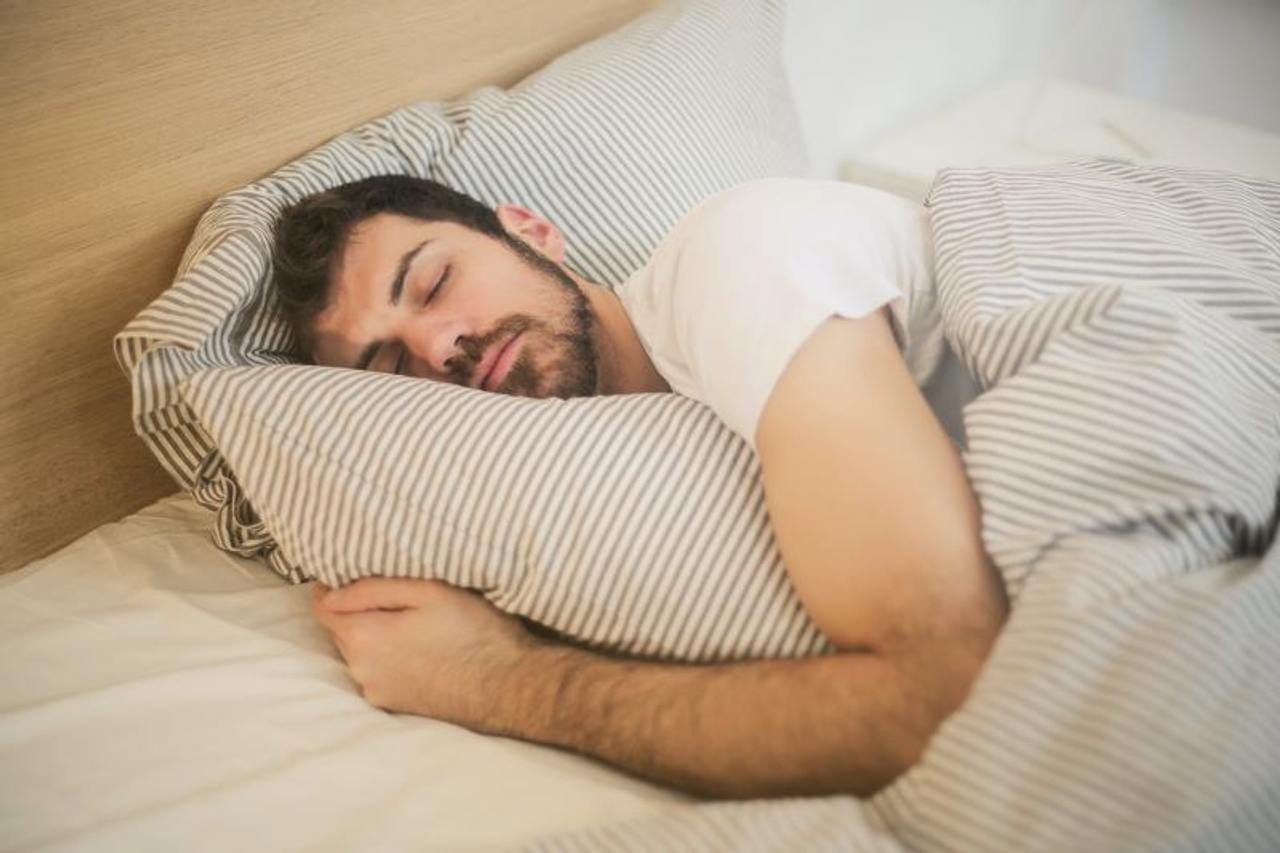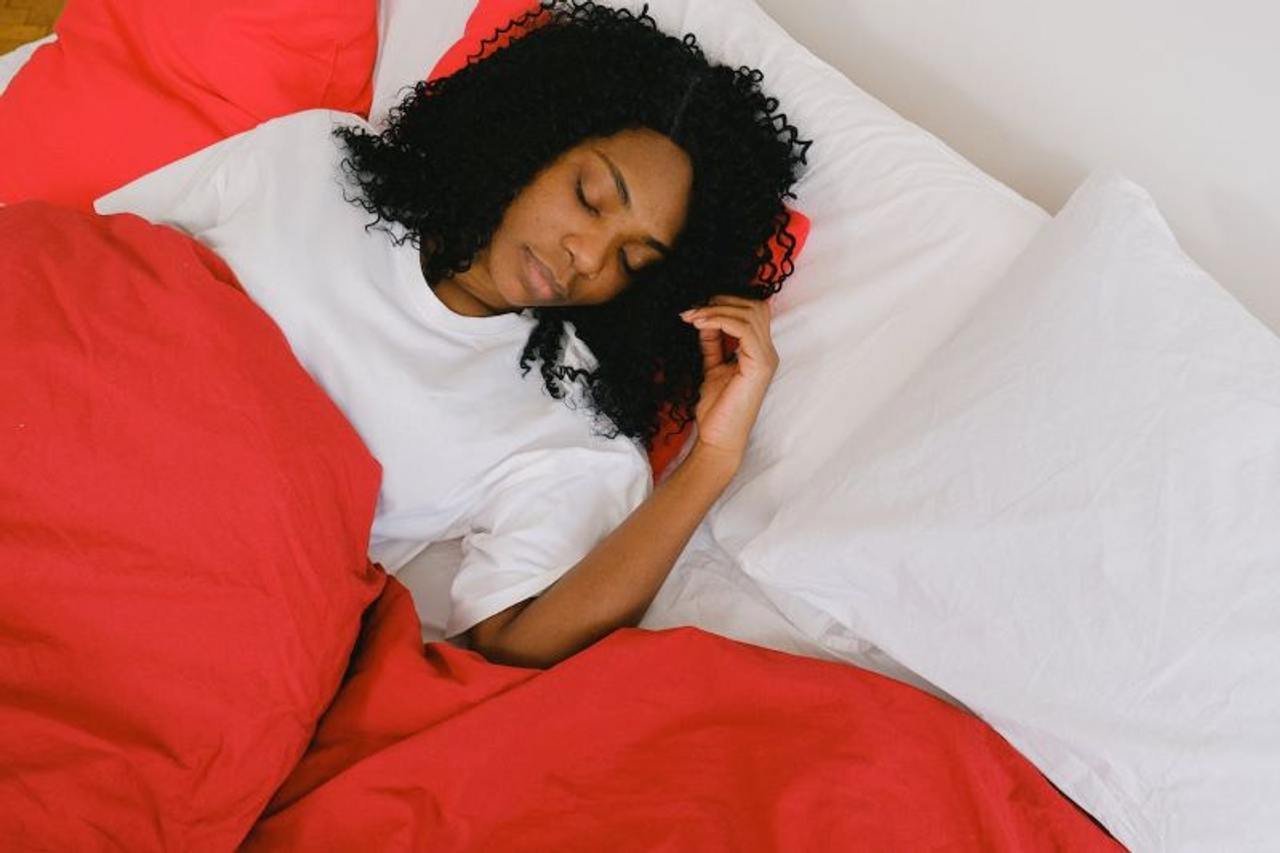Is there a gender sleep gap?
Is there a gender sleep gap?
BY Chloe Angus
22nd Dec 2023 Wellbeing
3 min read

Is there a gender sleep gap?
gender sleep gap
Recent surveys have looked into whether there is a gender sleep gap. Find out their findings and how you can improve your sleep to rest better every night
As the winter season unfolds, the quest for better sleep intensifies, evident in the 35 per cent surge in “sleeping better in winter” searches over the past month. This growing concern about achieving a restful night’s sleep extends beyond common culprits like smartphone use and room temperature.
A recent survey conducted by Mattress Online involving 3,000 participants unveils a fascinating concept—the potential “gender sleep gap”. In this comprehensive exploration, we not only present key findings but also seek guidance from sleep experts, including the “Sleep Geek” James Wilson and Chloe Angus, Corporate Wellbeing Manager at Cavendish Cancer Care. Together, they provide invaluable insights and actionable tips to optimise nightly rest.
Sleep duration and ease of falling asleep
Men and women alike grapple with insufficient sleep, with 80 per cent of women and 71 per cent of men reporting sleep durations below recommendations. The survey delves into the most common sleep duration (six to seven hours) and identifies that 18 per cent of men achieve the recommended seven to eight hours, slightly surpassing the 15 per cent of women.

Only 15 per cent of women and 18 per cent of men obtain seven to eight hours of sleep a night (credit: Andrea Piacquadio (Pexels))
Intriguingly, 10 per cent of women sleep less than four hours, which is a concern. When it comes to how easy it is to fall asleep, 27 per cent of women maintain a regular sleep schedule “always” compared to 23 per cent of men. In the “more often than not” category, both genders are evenly distributed at 33 per cent for women and 34 per cent for men.
Frequency of waking up and feeling well-rested after sleep
A substantial portion of individuals from both genders experience consistent awakenings during the night, with 33 per cent of females and 35 per cent of males reporting this phenomenon. The survey underscores that the most prevalent response regarding waking up is three times a night for both genders, accounting for 20 per cent of females and 19 per cent of males.
“33 per cent of females and 35 per cent of males experience consistent awakenings in the night”
When one encounters multiple awakenings throughout the night, the repercussions are often felt in the morning. A shared experience emerges in feeling well-rested “only on some occasions” for both genders, representing 46 per cent of females and 47 per cent of males. Conversely, the “always” well-rested response is infrequently reported, with merely two per cent of females and one per cent of males consistently enjoying this state of restfulness.
Bedtime habits for better sleep
The adoption of bedtime habits to enhance sleep quality is a multifaceted aspect of individuals’ nightly routines. Among these practices, limiting screen use an hour before sleep stands out as the most widespread habit, embraced by a considerable 16 per cent of both females and males.
Limiting screen use an hour before sleeping is the most widespread bedtime habit (credit: Nubelson Fernandes (Unsplash))
Following closely as the second-most popular bedtime habit is the practice of dimming the lights. This habit, recognised by 15 per cent of females and 14 per cent of males, aligns with the understanding that exposure to bright lights in the evening can disrupt the body’s natural circadian rhythm. This refers to the natural, internal processes that follow a roughly 24-hour cycle and influence physiological, behavioural and mental change that happen in living organisms—one of the key elements is the sleep-wake cycle. Disruptions like exposure to artificial light can affect your health, so recognising and respecting circadian rhythms are essential for overall wellbeing, ensuring better sleep.
In the realm of herbal remedies, another habit is herbal tea. This emerges as a favoured choice for some individuals seeking a calming prelude to bedtime. This aromatic and soothing beverage is chosen by nine per cent of females and eight per cent of males, reflecting a preference for natural, non-pharmaceutical aids in the pursuit of better sleep.
Expert advice: Strategies for quality sleep
Chloe Angus and James Wilson, experts in the field of sleep, underscore the significance of adhering to a consistent routine and cultivating an environment conducive to quality sleep. Practical recommendations from these experts encompass elements such as exposure to the morning sun, engaging in regular exercise, opting for decaffeinated beverages, and disengaging from stimulating activities prior to bedtime.
“Recommendations from experts include regular exercise and exposure to the morning sun”
Notably, activities like smartphone use and television viewing are discouraged in favour of more calming alternatives such as reading a book or listening to soothing podcasts. These expert-endorsed practices aim to establish a conducive atmosphere for restful sleep.
Exclusive expert techniques you need to know:
An intriguing expert tip involves the “A-Z picking a topic” technique—select a category (animals, countries, names, etc), find an item that starts with the letter A, and progress through the alphabet. This engaging mental exercise aids in calming the mind and facilitating a smoother transition to sleep.
Exercises like those listed here can calm the mind and facilitate a smoother transition to sleep (credit: SHVETS production (Pexels))
Another that is introduced by Chloe Angus is the finger breathing technique, a self-hypnosis method combining touch and controlled breathing for calmness. To practise finger breathing, start by lying or sitting comfortably, and inhale deeply and slowly. Pinch the fingers and thumb of one hand together, cupping and resting them in your palm for five breaths; then switch hands. Make a thumbs-up with one hand, wrap the other hand’s fingers around the opposing thumb, hold for five breaths, and switch hands. Repeat this process for the remaining fingers, holding each for five breaths.
End of Is there a gender sleep gap?



Comments
Is there a gender sleep gap? — No Comments
HTML tags allowed in your comment: <a href="" title=""> <abbr title=""> <acronym title=""> <b> <blockquote cite=""> <cite> <code> <del datetime=""> <em> <i> <q cite=""> <s> <strike> <strong>